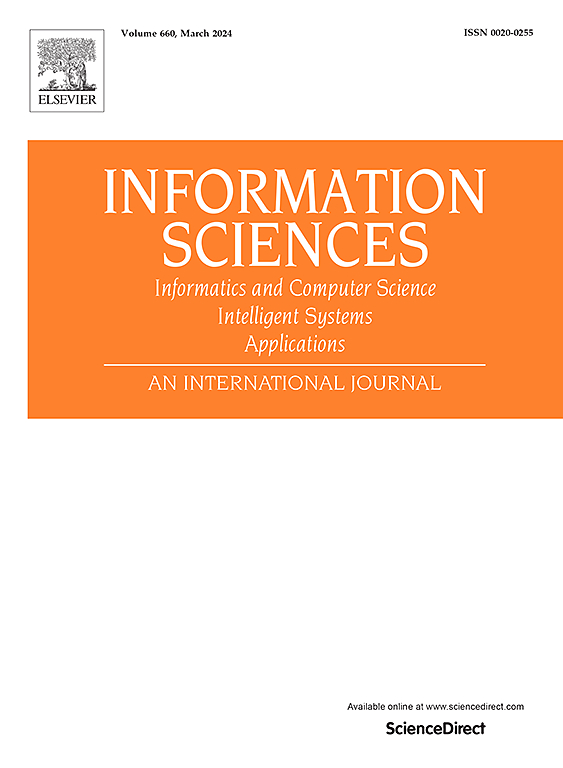时间序列异常检测的子序列异质性对比学习
IF 6.8
1区 计算机科学
0 COMPUTER SCIENCE, INFORMATION SYSTEMS
引用次数: 0
摘要
时间序列异常检测广泛应用于各种现实场景。近年来,对比学习在学习判别表征以检测异常方面表现出了显著的能力。然而,现有的大多数基于对比的方法依赖于复杂的对比机制和专门设计的模型体系结构,难以在各种应用场景中保持效率和灵活性。为了解决这一限制,我们引入了子序列异质性,将其定义为通过固定间隔采样获得的子序列之间的变异模式和统计特征的差异,这种差异在异常序列中比在正常序列中更为明显。它可以作为一个自然的判别标准,消除了复杂的对比机制和专门的模型体系结构的需要。具体来说,我们采用了一种有效的线性复杂度的时间分层掩蔽策略来构建两个分支来学习不同粒度的表示。子序列异质性对比学习(SHCL)是由不同的神经网络实现的,可以灵活地应用于不同场景的异常检测。在8个基准数据集上的实验表明,SHCL不仅在减少时间和资源成本的情况下达到了最先进的性能,而且显著提高了不同神经网络区分正常和异常模式的能力。源代码可在https://github.com/Zhangzzbzzb/SHCL/上公开获得。本文章由计算机程序翻译,如有差异,请以英文原文为准。
Subsequence heterogeneity contrastive learning for time series anomaly detection
Time series anomaly detection is widely applied across various real-world scenarios. Recently, contrastive learning has shown remarkable ability in learning discriminative representations for detecting anomalies. However, most existing contrastive-based methods rely on complex contrastive mechanisms and specially designed model architectures, which make it difficult to maintain efficiency and flexibility across various application scenarios. To address this limitation, we introduce Subsequence-Heterogeneity that defined as the discrepancies in variation patterns and statistical characteristics between subsequences obtained through fixed-interval sampling, which are more pronounced in anomalous sequences than in normal ones. It can serve as a natural discrimination criterion and eliminate the need for complex contrastive mechanisms and specialized model architectures. Specifically, we adopt an efficient temporal hierarchical masking strategy with linear complexity to construct two branches for learning representations at different granularities. The Subsequence-Heterogeneity Contrastive Learning (SHCL) is implemented with different neural networks and enables flexible application to anomaly detection across diverse scenarios. Experiments on eight benchmark datasets demonstrate that SHCL not only achieves state-of-the-art performance with reduced time and resource costs but also significantly improves the ability of different neural networks to distinguish normal from anomalous patterns. The source code is publicly available at https://github.com/Zhangzzbzzb/SHCL/.
求助全文
通过发布文献求助,成功后即可免费获取论文全文。
去求助
来源期刊

Information Sciences
工程技术-计算机:信息系统
CiteScore
14.00
自引率
17.30%
发文量
1322
审稿时长
10.4 months
期刊介绍:
Informatics and Computer Science Intelligent Systems Applications is an esteemed international journal that focuses on publishing original and creative research findings in the field of information sciences. We also feature a limited number of timely tutorial and surveying contributions.
Our journal aims to cater to a diverse audience, including researchers, developers, managers, strategic planners, graduate students, and anyone interested in staying up-to-date with cutting-edge research in information science, knowledge engineering, and intelligent systems. While readers are expected to share a common interest in information science, they come from varying backgrounds such as engineering, mathematics, statistics, physics, computer science, cell biology, molecular biology, management science, cognitive science, neurobiology, behavioral sciences, and biochemistry.
 求助内容:
求助内容: 应助结果提醒方式:
应助结果提醒方式:


